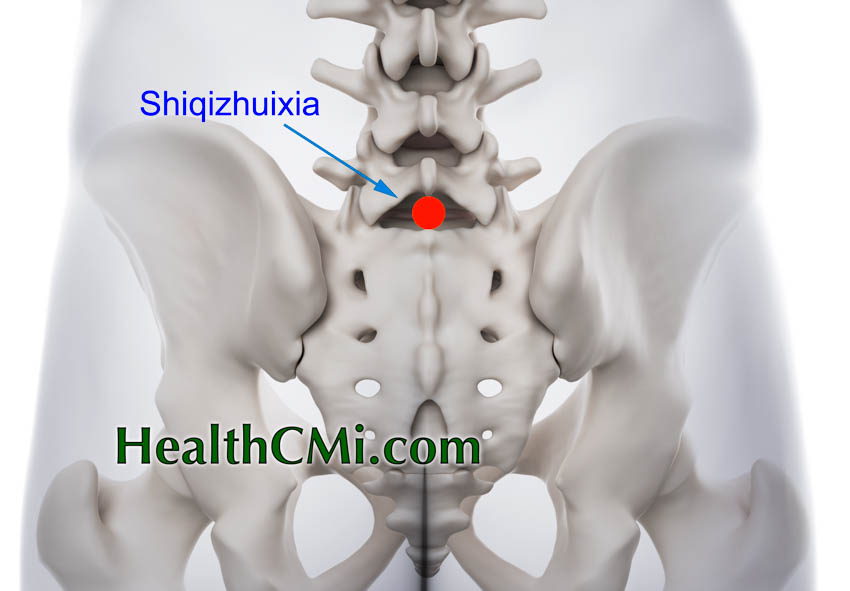Acupuncture is effective for relieving symptoms and upregulating β-endorphin levels in patients with lumbar disc herniation. Researchers from Heping Hospital affiliated with Zhangzhi Medical School conducted a clinical trial on the efficacy of treating lumbar disc herniation with manual and warm needle acupuncture. The warm needle acupuncture group presented superior patient outcomes. [1]
The efficacy rate in the study was determined by the following four-level symptom scoring system:
- Controlled: pain disappeared, lumbar activity restored, at least 70 degrees in straight leg raising test (SLRT)
- Significantly effective: pain relieved, lumbar activity mostly restored, at least 70 degrees in straight leg raising test (SLRT)
- Effective: pain relieved, lumbar activity improved, 60–70 degrees in straight leg raising test (SLRT)
- Ineffective: major symptoms remained
The Visual Analogue Scale (VAS) and the Oswestry Disability Index (ODI) were also used to evaluate pain levels and daily activity ability. Researchers used ELISA kits to assess patients’ β-endorphin levels.
Upon completion of the treatment, total efficacy rate in the warm needle acupuncture group was higher than that of the control group, 86.66% and 63.34% respectively. VAS and ODI scores were lower while β-endorphin levels were higher in the warm needle acupuncture group. The results show that the addition of moxibustion promotes the secretion of β-endorphinsachieving and achieves better pain relief. Learn more about the treatment of back pain in the acupuncture continuing education course: Low Back Pain.
A total of 60 lumbar disc herniation cases were included in the study. They were randomized into manual and warm needle acupuncture groups, with 30 cases in each group. The manual acupuncture group consisted of 16 males and 14 females, average age was 54.6 ±5.4 years, and course of condition was 4–15 months. Mean course of condition was 8.5 ±4.3 months. The warm needle acupuncture group consisted of 15 males and 15 females, average age was 55.1 ±5.4 years, and course of condition was 4–15 months. Mean course of condition was 8.1 ±3.7 months.
Patients included in the study had a history of lumbar trauma or chronic strain. They suffered from cold-dampness according to Traditional Chinese Medicine (TCM) principles. They experienced radiating pain in the hips and lower extremities, and pain levels increased with abdominal pressure. Restricted lumbar movement was observed. Also, patients suffered from sensory hypersensitivity or dullness in the lower extremities in the affected area. The manual acupuncture group received acupuncture on the following points (bilateral):
- EX-B2 (Jiaji, at the affected area)
- BL40 (Weizhong)
- GB34 (Yanglingquan)
- GB30 (Huantiao)
Huatuo brand needles (0.30 mm × 50 mm) were used for the procedure, and inserted perpendicularly. For Jiaji acupoints, insertion depth was 30–50 mm. For deqi arrival, a numbing sensation was felt in the foot area. Other points attained a deqi sensation as well. Needles were retained for 30 minutes. Treatments were administered on alternate days, with five treatments completing a session. Three sessions were administered in total, with a two-day interval between sessions.
The warm needle acupuncture group was given moxibustion on bilateral Jiaji acupoints in addition to the above treatment. Moxa (1.5 cm × 2 cm) pieces were connected to the needle handles. Patients otherwise underwent the same course of treatment as the regular manual acupuncture group. The results show that acupuncture, warm needle acupuncture especially, provides relief for patients with lumbar disc herniation.
Reference:
[1] Zai Fenglei, Wu Ruilan, Zheng Meimeng, Guo Liyun, Warm Needle Moxibustion Relieves Symptoms of Lumbar Disc Herniation Patients and Upregulates β-endorphin, Acupuncture Research, Aug. 2018, Vol. 43, No. 8.



